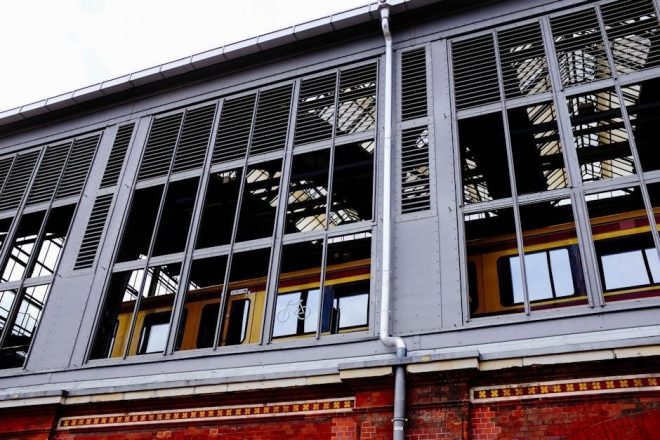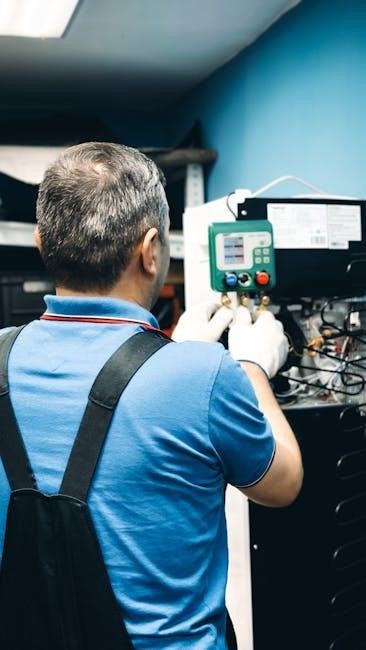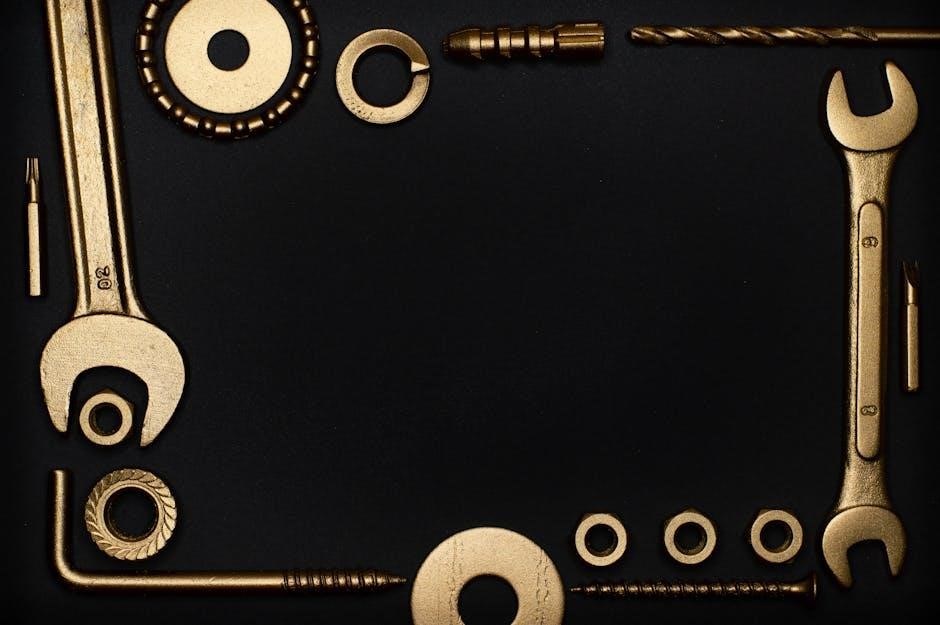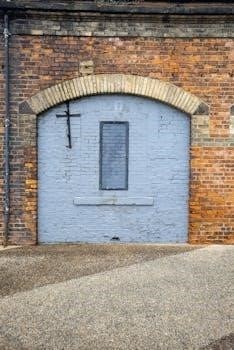The Connecticut Marriage License Application PDF is the official form required for marriage ceremonies in the state, streamlining the process with accurate details and legal requirements.
1.1 What is the Connecticut Marriage License Application PDF?

The Connecticut Marriage License Application PDF is the official document required for couples planning to marry in the state. It streamlines the marriage application process by outlining necessary personal information, documentation requirements, and legal details. This form ensures that all statutory requirements are met, facilitating a legally recognized marriage. The PDF format makes it easily accessible and simple to complete, while its structured layout helps couples provide accurate details. The document includes sections for personal information, previous marital statuses, and parental consent for minors, if applicable. It is designed to avoid delays and ensure compliance with Connecticut’s marriage laws. Accuracy and completeness are crucial when filling out the form, as it serves as the foundation for obtaining a valid marriage license.
1.2 Importance of Using the Official PDF
Using the official Connecticut Marriage License Application PDF is crucial for ensuring legal compliance and avoiding delays. The official form is specifically designed to meet state requirements, reducing errors and omissions. It includes all necessary fields and instructions, ensuring accuracy and completeness; Unofficial forms may lack required elements, leading to processing issues. The official PDF is compatible with state systems, preventing technical difficulties, and is regularly updated to reflect legal changes. This ensures couples have the most current information. Using the official form also maintains document security and authenticity, crucial for legal validity. Accuracy and compliance are paramount, making the official PDF the reliable choice for marriage license applications in Connecticut.
Eligibility Requirements
Both parties must meet Connecticut’s legal age requirements, provide valid identification, and appear in person. Marriage licenses are prohibited for individuals under 18, and blood tests are not required.
2.1 Age Requirements
In Connecticut, the legal age to marry is 18 years old. Individuals under 18 cannot obtain a marriage license, even with parental consent. This strict regulation ensures legal adulthood for marriage. Both parties must provide valid identification to verify their age. The state prohibits marriage for minors under any circumstances, aligning with modern legal standards. Couples must meet this age requirement to apply for a marriage license. Providing false information about age can lead to legal consequences. This ensures that all marriages in Connecticut are legally valid and consensual. Age verification is a critical step in the application process, maintaining the integrity of the marriage laws in the state.

2.2 Residency Requirements
In Connecticut, couples must apply for a marriage license in the town where the ceremony will take place. There are no strict residency requirements, but both parties must appear in person at the town clerk’s office. The license is only valid for marriages performed within Connecticut. While residency in the state is not mandated, the application process is tied to the location of the wedding. This ensures that the marriage is legally recognized in the specific town where the ceremony occurs. Proper identification and compliance with local regulations are essential for a smooth application process. The residency requirement is flexible, allowing non-residents to marry in Connecticut as long as they follow the application procedures.
Required Documentation
The Connecticut Marriage License Application requires valid government-issued ID, Social Security information, and documentation for previous marriages, such as divorce decrees or death certificates, if applicable.
3.1 Personal Information Needed
The Connecticut Marriage License Application PDF requires detailed personal information from both applicants. This includes full legal names, dates of birth, Social Security numbers, and residency details. Applicants must provide their city and state of birth, current addresses, and contact information. Additional details such as occupation and marital status are also necessary. The form may request information about parents, including their names and birthplaces, to comply with state marriage laws. All data must be truthful and verifiable, as any inaccuracies could delay the process. Proper identification, such as a driver’s license or passport, is typically required to validate the provided information. Ensuring all personal details are correctly filled out is crucial for a smooth application process.
3.2 Identification Requirements
Both parties must provide valid government-issued identification when submitting the Connecticut Marriage License Application PDF. Acceptable forms of ID include a driver’s license, passport, or state ID. Additionally, Social Security cards or numbers are required for both applicants. If either party has been previously married, certified documents such as divorce decrees or death certificates must be submitted. All identification and supporting documents must be valid and up-to-date to ensure the application is processed without delays. Proper identification is essential to verify the accuracy of the information provided and to comply with state marriage laws. Ensuring all documents are in order helps streamline the application process and avoids potential complications.
3.3 Documentation for Previous Marriages
Applicants who have been previously married must provide documentation to verify the end of their last marriage. This includes a certified copy of a divorce decree, annulment, or death certificate. The document must be complete and include the court’s seal or official certification. If the marriage ended due to divorce, the decree must specify the date and location of the dissolution. For widowed individuals, a death certificate of the deceased spouse is required. This documentation ensures compliance with Connecticut’s marriage laws and confirms that there are no legal impediments to the new marriage. Accurate and complete submission of these documents is essential to avoid delays in processing the application.

Application Process
The Connecticut Marriage License Application process involves obtaining, completing, and submitting the official PDF form to the town clerk’s office where the ceremony will occur, with proper documentation and fees.

4.1 How to Obtain the Application Form
The Connecticut Marriage License Application PDF can be easily obtained from the official website of the town clerk’s office where the ceremony will take place. Couples can download the form directly from the website or pick up a physical copy in person. Some towns also provide a marriage license worksheet to help prepare the necessary information before filling out the official application. It is essential to use the official PDF form to ensure compliance with state requirements. Once downloaded, the form should be reviewed carefully to understand the required information and documentation. Submitting the completed form to the correct town clerk’s office is the next step in the process. Ensure the form is filled out accurately to avoid delays.
4.2 Completing the Application Form

Completing the Connecticut Marriage License Application PDF requires careful attention to detail to ensure accuracy. Both parties must provide their full legal names, dates of birth, Social Security numbers, and residency information. The form also asks for details about previous marriages, including divorce or death certificates, if applicable. Couples must accurately fill in the intended date and place of marriage, as well as the officiant’s name. Proper identification, such as a driver’s license or passport, is typically required to validate the information. It is crucial to review the form thoroughly to avoid errors or omissions, as any inaccuracies could delay the process. Using the official PDF ensures compliance with state requirements and streamlines the application process.
4.3 Submitting the Application
Once the Connecticut Marriage License Application PDF is completed, it must be submitted to the appropriate town clerk’s office where the marriage will take place. Both parties must appear in person to sign the application and provide required documentation. A fee, typically around $50, is due upon submission, payable by cash, check, or credit card, depending on the town’s policies. The application is usually processed promptly, often on the same day, and the license is issued immediately. The marriage license is valid for 65 days from the date of issuance. No blood tests are required in Connecticut, simplifying the process. Ensure all information is accurate to avoid delays and confirm the license is valid for your ceremony date.
Fees and Payment
The standard fee for a Connecticut marriage license is typically around $50, though it may vary slightly by town. Payment can be made by cash, check, or credit card;
5.1 Marriage License Fee
The standard fee for a Connecticut marriage license is typically around $50, though it may vary slightly depending on the town. This fee is required to process the application and issue the license. Payment methods generally accepted include cash, check, or credit card, but it’s advisable to confirm with the town clerk’s office beforehand. The fee covers the administrative costs of processing the application, ensuring the marriage is legally recorded. It’s important to note that fees are subject to change, so couples should verify the current amount before submitting their application. Additionally, some towns may offer expedited services for an extra fee, which can expedite the processing time if needed.
5.2 Accepted Payment Methods
Payment for the Connecticut marriage license fee is typically accepted in the form of cash, check, or credit card, though specific methods may vary by town. It’s recommended to contact the town clerk’s office in advance to confirm accepted payment options. Some offices may prefer cash or checks, while others accommodate credit card transactions. Fees are subject to change, so verifying the payment methods and total amount beforehand is advisable. Ensuring the correct payment is made streamlines the application process and avoids delays. Couples should also inquire about any additional fees for expedited services or certified copies, if needed. Proper payment ensures the license is issued promptly and the marriage is legally recognized;
Processing Time and Validity
The Connecticut marriage license is typically processed within a few business days, with same-day processing often available. It remains valid for 65 days from issuance.
6.1 How Long Does it Take to Process?

The Connecticut marriage license application is typically processed within a few business days. Same-day processing is often available, depending on the town clerk’s workload. Once submitted, the license is issued promptly, provided all requirements are met. Couples should allow at least 24 hours before the ceremony to ensure everything is finalized. The license is valid for 65 days from the date of issuance, giving ample time for the ceremony to take place. No blood tests are required, simplifying the process. Delays may occur if the application is incomplete or additional documentation is needed. Accuracy in the application ensures a smooth and timely processing experience for couples planning their wedding in Connecticut.

6.2 Validity Period of the Marriage License
The Connecticut marriage license is valid for 65 days from the date of issuance. Couples must ensure the ceremony takes place within this timeframe to avoid reapplying. After the wedding, the completed license must be returned to the town clerk’s office within 10 days. This step is crucial for legal recognition of the marriage. Once recorded, couples can obtain certified copies for legal purposes, such as name changes or benefits enrollment. The validity period allows sufficient time for planning, and the return process ensures all legal formalities are completed efficiently. Proper adherence to these timelines guarantees a legally recognized marriage in Connecticut.
Post-Ceremony Procedures
After the ceremony, the completed marriage license must be returned to the town clerk’s office within 10 days. This step ensures legal recognition of the marriage.
7.1 Returning the Completed License
After the ceremony, the completed marriage license must be returned to the town clerk’s office within 10 days. This step is crucial for legal recognition. The officiant typically handles this, but the couple should ensure it is done promptly. Late submissions may result in delays or penalties. Once received, the town clerk records the marriage, making it legally recognized. Couples can then request certified copies for legal purposes, such as name changes or benefits enrollment. Timely return ensures all legal processes proceed smoothly and avoids complications. Compliance with Connecticut’s regulations is essential for finalizing the marriage and obtaining official documentation.
7.2 Obtaining Certified Copies
Certified copies of the marriage license are essential for legal purposes, such as name changes or benefits enrollment. Couples can request these copies from the town clerk’s office where the marriage was recorded. A completed request form and valid photo identification are typically required. The fee for each certified copy is usually around $20, payable by cash, check, or credit card, depending on the town’s policies. Some municipalities offer online or mail-in request options for convenience. It is advisable to obtain multiple copies to streamline future administrative tasks. Certified copies are stamped as official documents, ensuring their validity for legal proceedings. This step finalizes the marriage documentation process, providing couples with the necessary proof of their union.

Legal Considerations
Connecticut marriage laws require compliance with state regulations, including age restrictions and proper documentation. The official PDF ensures legal validity, adhering to marriage license requirements and name change procedures.
8.1 Marriage Laws in Connecticut
Connecticut marriage laws ensure legal validity and compliance with state regulations. Couples must meet specific requirements, including a minimum age of 18, with no exceptions for underage marriages. Both parties must appear in person to apply, providing valid identification and required documentation. The state no longer requires blood tests, simplifying the process. Marriage licenses are issued by the town clerk’s office where the ceremony will occur, and the license is valid for 65 days. Recent legal changes have tightened marriage laws, ensuring compliance with modern standards. Adhering to these laws is essential for a legally recognized marriage in Connecticut, and couples must ensure all requirements are met to avoid complications.
8.2 Name Change Procedures
In Connecticut, name change procedures following marriage require certified copies of the marriage license. Couples must submit the completed license to the town clerk’s office within 10 days of the ceremony. To obtain certified copies, applicants must provide photo identification and complete a request form. Fees for certified copies vary by municipality, typically ranging from $20 to $30 per copy. These documents are essential for legal name changes on Social Security cards, driver’s licenses, and other official records. The process ensures that name changes are legally recognized and updated across all relevant institutions. Proper documentation and timely submission are crucial for a smooth transition.

Where to Apply
Couples must apply for a Connecticut marriage license at the Town Clerk’s office in the town where the ceremony will take place. A list of town clerks is available through the Secretary of the State.
9.1 Town Clerk’s Office
The Connecticut Marriage License Application must be submitted in person at the Town Clerk’s Office in the town where the ceremony will take place. Both parties must appear together to complete the application and swear to the accuracy of the information provided. Applicants should bring all required documents, including valid identification, Social Security information, and any necessary paperwork related to previous marriages. The Town Clerk’s Office will process the application, collect the fee, and issue the license. Office hours vary by town, so it’s advisable to check ahead of time. Once the application is approved, the license is typically issued promptly, allowing the ceremony to proceed as planned. The license is valid for 65 days from issuance.
9.2 List of Town Clerks in Connecticut
A complete list of Town Clerks in Connecticut is maintained by the Secretary of the State. Couples can access this list to identify the appropriate Town Clerk’s office where their marriage ceremony will take place. Each town has its own Clerk responsible for processing marriage license applications. For example, the Bridgeport Office of Vital Records handles applications for ceremonies in Bridgeport, while other towns have their own specific offices. The list includes contact information, office hours, and addresses for all Town Clerks across Connecticut. Couples should visit the official Connecticut government website or contact the Secretary of the State’s office to obtain the most up-to-date list. This ensures they apply at the correct location for their marriage license.























































